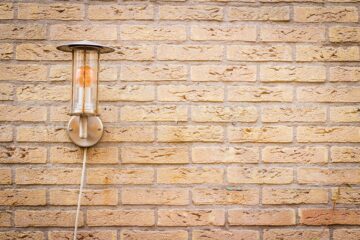Meaning of Volatile Organic Compounds
We get a lot of questions from customers about paint VOCs. Volatile organic compounds commonly known as VOCs are gases that are given off by many indoor sources according to the Oxford Dictionary. But in our case, Volatile Organic Compounds or VOCs are chemicals found in solvent-based paints as well as coatings. In most cases, it acts as a medium that is used in transferring from the paint tin to the surface as well as aiding the paint to flow. It must be noted that the concentrations of most volatile organic compounds are often higher in indoor air than outdoor air. Before we look at the effects of VOCs, let’s look at the origin of this compound.
What Are VOCs in Paint?
According to scientists, Formaldehyde is one of the most common VOCs that come as a colourless gas that carries a sharp as well as a bitter smell. The gad is common in most building materials, including plywood, particleboard, glues, some paints, and many others. Similarly, you can find Formaldehyde in some drapes, fabrics, and not to mention certain types of foam insulation. It’s worth noting that these are not the only available sources of Volatile Organic Compounds. Other sources of VOCs come from the burning of fuels that produce several gases ranging from wood to kerosene to tobacco products. What most people, that are fond of using perfumes, fail to know is that the lovely product can cause VOCs. In the same fashion, VOCs can also be generated by beauty products such as hair spray, cleaning agents, dry cleaning fluid, paints, lacquers, varnishes, hobby supplies, and copying and printing machines. The above-outlined products have the power of releasing VOCs when in use as well as in storage. The good thing is that the amount of VOCs emitted tends to reduce as the product ages.
Some Health Concerns of VOCs
It’s important to realise that VOCs come with a variety of chemicals that can irritate the eye, nose plus throat. In an advanced stage, victims can experience shortness of breath, headaches, fatigue, nausea, dizziness together with skin problems. Higher concentrations may irritate your lungs, as well as causing damage to the liver, kidney, or central nervous system. Long-term exposure may also cause damage to the liver, kidneys, or central nervous system. Although not fully confirmed, there are compelling reasons to believe that some form of VOCs can cause cancer. This comes as the world continues crumbling with cancer, one of the deadliest diseases around the continent. Figures from the World Health Organization show that millions of people die annually due to this dreadful disease. It’s important to note that the health effects caused by VOCs depend on the level of concentration as well as the duration of exposure to the chemicals, and therefore, more effort should be directed towards reducing the concentration. The condition can be worse if the victim has other medical complications such as Asthma.
Why VOCs Are Harmful To Children
Unlike adults or older children, VOCs can have more adverse effects on infants. According to medical experts, the exposure of children to VOCs is most likely going to disrupt the endocrine properties of children. For starters, there’s a growing tendency of every parent wanting to buy a new mattress every time a new member of the family arrives. As pointed out earlier, baby’s cribs, new mattresses have the power of emitting more VOCs than older ones. Since infants sleep more than adults, it means most likely going to be exposed to the chemicals than any other person. It’s from this that it’s not a good idea to paint your property especially when you have a newborn baby. VOCs can bring respiratory challenges to the newborn, something that can translate into allergic reactions.
How To Avoid Exposure To VOCs?
The best way of avoiding exposure to VOCs is true controlling their source. Here, a lot of efforts can be seen especially when it comes to painting materials where manufacturers are now switching to water-based alternatives that are VOC-free. These efforts need to be transferred to other sectors as well. Let us look at the general ways that you can use to avoid VOCs.
Ventilation
Increase ventilation by opening windows and doors after you bring new VOC sources into your houses, such as new carpets, furniture, or drapes
Make sure you get enough fresh, clean air into your home by opening windows
Follow manufacturers’ labels when using household chemicals. If the label says “use in a well-ventilated area” go outside or to an area where an exhaust fan or open window provides extra ventilation
- Minimize the use of scented products such as plug-in or aerosol deodorizers, candles, and incense
- Consider storing furnishings and building materials for at least a few weeks. This will allow gases to be given off before you bring them into your home. If this is not possible, increase the ventilation by opening windows and doors in your home for a few weeks
- Buy only enough paints, cleaners, and solvents for immediate use so you don’t have to store them in your home. Follow instructions on the product label. Keep lids on tightly. Store products in a separate room like an outdoor shed or areas with proper ventilation
- Some building products give off fewer VOCs than others. Select paints and varnishes that are labelled as containing low VOCs
- Do not allow smoking in or near your home. Second-hand smoke contains many pollutants, including VOCs
- Remove old or unnecessary tins or bottles that contain products with VOCs from the home. Do not throw unused products away with your household garbage. Ensure you safely and properly dispose of them.
- Avoid bringing recently dry-cleaned clothing into your home if it still has a strong smell. Leave the clothing at the shop, or take it out of the plastic wrapping and hang it in a ventilated area until it is dry
- If glues are necessary, select those suitable for indoor use
- Leave the area during carpet installation
- Ventilate the area as much as possible during the installation using fans and opening windows and doors. Continue to ventilate for several days after installation


